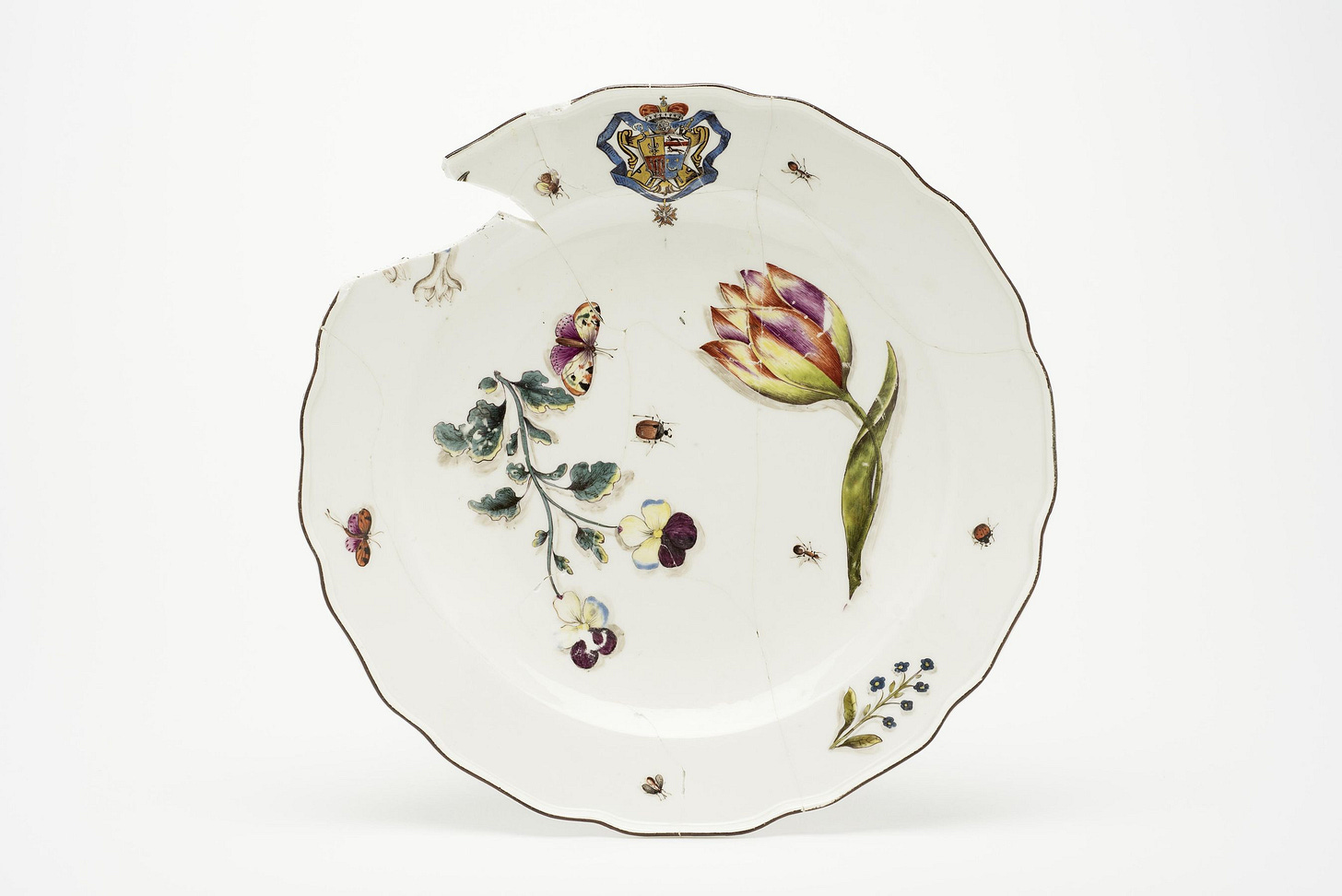Golden Scars and Broken Memories
Can you mend fractured history?

I was staring at the broken plate in my hand, carefully running my finger over the smooth white porcelain with the abrupt, sharp edges. I tried to imagine where this plate had been. The famous Meissen factory near Dresden, that much was clear from the logo. Then someone’s household. Had it been used or just displayed? Probably the latter, given how expensive the plate would have been.
Meissen was the first and best-known porcelain in Europe. In the 17th century, wealthy Europeans loved and cherished imported porcelain from China and Japan, but they had no idea how to make it, and many experiments to do so failed. Supported by Augustus the Strong, King of Poland and Elector of Saxony, German alchemists eventually managed to find a way to produce large quantities of it. The Meissen Factory, established in 1710, became synonymous with luxury porcelain.
Not that you’d be able to see that from the sorry-looking fragment I was holding in my hand. It was broken and its intricate pattern was covered with unsightly black marks and hairline cracks.
‘It was looted in 1938,’ came a voice from somewhere, ‘and then destroyed and burnt in the bombing of Dresden in 1945.’
My mind snapped back to the place I was sitting: the elegant Reading Room of the British Academy in central Lonon. The London Centre for the Humanities had summoned its Founding Fellows for a presentation by the artist and writer Edmund de Waal, who works with porcelain and often uses his creations to respond to history.
I can’t credibly claim to be particularly attuned to art, but the idea of the broken plate from Dresden fascinated me. As it turned out, the fragment in my hand was from the vast collection of 18th-century porcelain owned by the Jewish banker Gustav von Klemperer. His family had to flee Nazi Germany in the 1930s, and the Gestapo ‘confiscated’ the lot in 1938. Adolf Hitler then personally decided to hand the collection over to the state of Saxony in 1942.
Keep reading with a 7-day free trial
Subscribe to ZEITGEIST to keep reading this post and get 7 days of free access to the full post archives.

